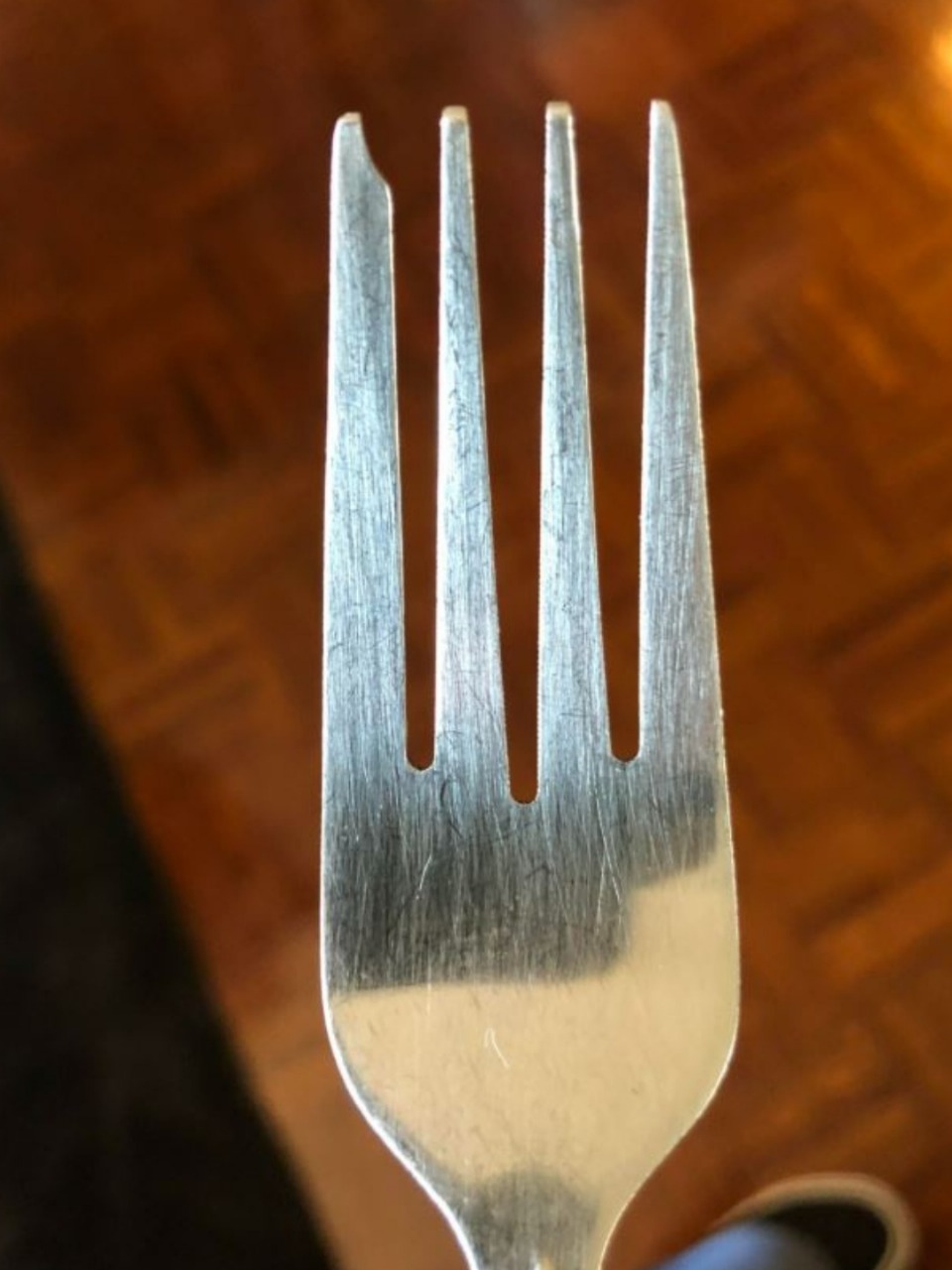A Mid-Century Innovation for Modern Living
The cutting fork rose to popularity in the 1940s–1960s — a golden age of kitchen convenience.
As American households embraced:
Faster meals
Casual dining
Space-saving gadgets
Manufacturers responded with multifunctional utensils.
The cutting fork was part of this wave — designed to:
Reduce the number of tools on the table
Make mealtime easier for women (often the primary home cooks)
Add a touch of modern flair to silverware sets
Many vintage “dinnerware combinator” sets included cutting forks — often marked with elegant patterns and monograms.
And while they faded from mainstream use, they’ve never fully disappeared.
Where You’ll Still Find Cutting Forks Today
Vintage silverware sets
Collectors love them for their unique design
Diners and cafeterias
Practical for casual meals
Camping or travel kits
Saves space and weight
Nostalgic or retro kitchen stores
Celebrated as a design classic
Some modern brands have even revived the style — blending retro charm with everyday function.
Why It’s So Often Misunderstood
Because the short tine looks like a break or defect, many people:
Toss the fork, thinking it’s damaged
Assume it’s a cheaply made utensil
Never realize it’s meant to be used differently
But once you know its purpose?
You’ll never look at it the same way again.
That “chipped” prong isn’t broken.
It’s brilliantly designed.
Final Thoughts: Sometimes the Most Useful Tools Are the Ones That Look Like Mistakes
We think innovation means high-tech gadgets and smart devices.
But some of the smartest ideas are hiding in plain sight — in our silverware drawers.
The cutting fork is proof that good design solves real problems — quietly, elegantly, and without fanfare.
So next time you see a fork with a “broken” prong…
Don’t discard it.
Try it.
Use it.
Cut your pasta with it.
Because sometimes, the difference between a frustrating meal and a smooth one…
Isn’t in the food.
It’s in the fork.
And once you know its secret?
You might just start hunting for more.
ADVERTISEMENT

